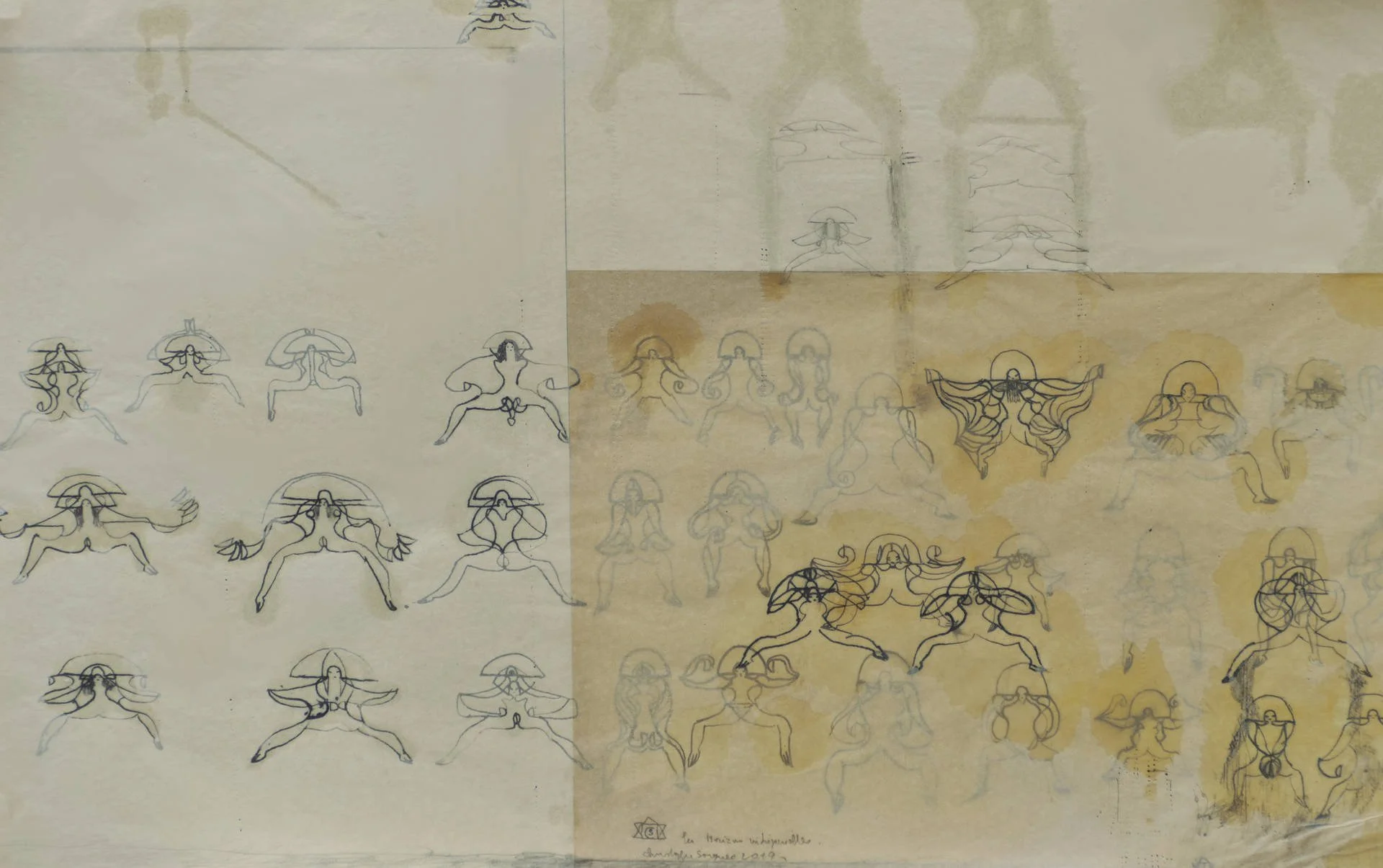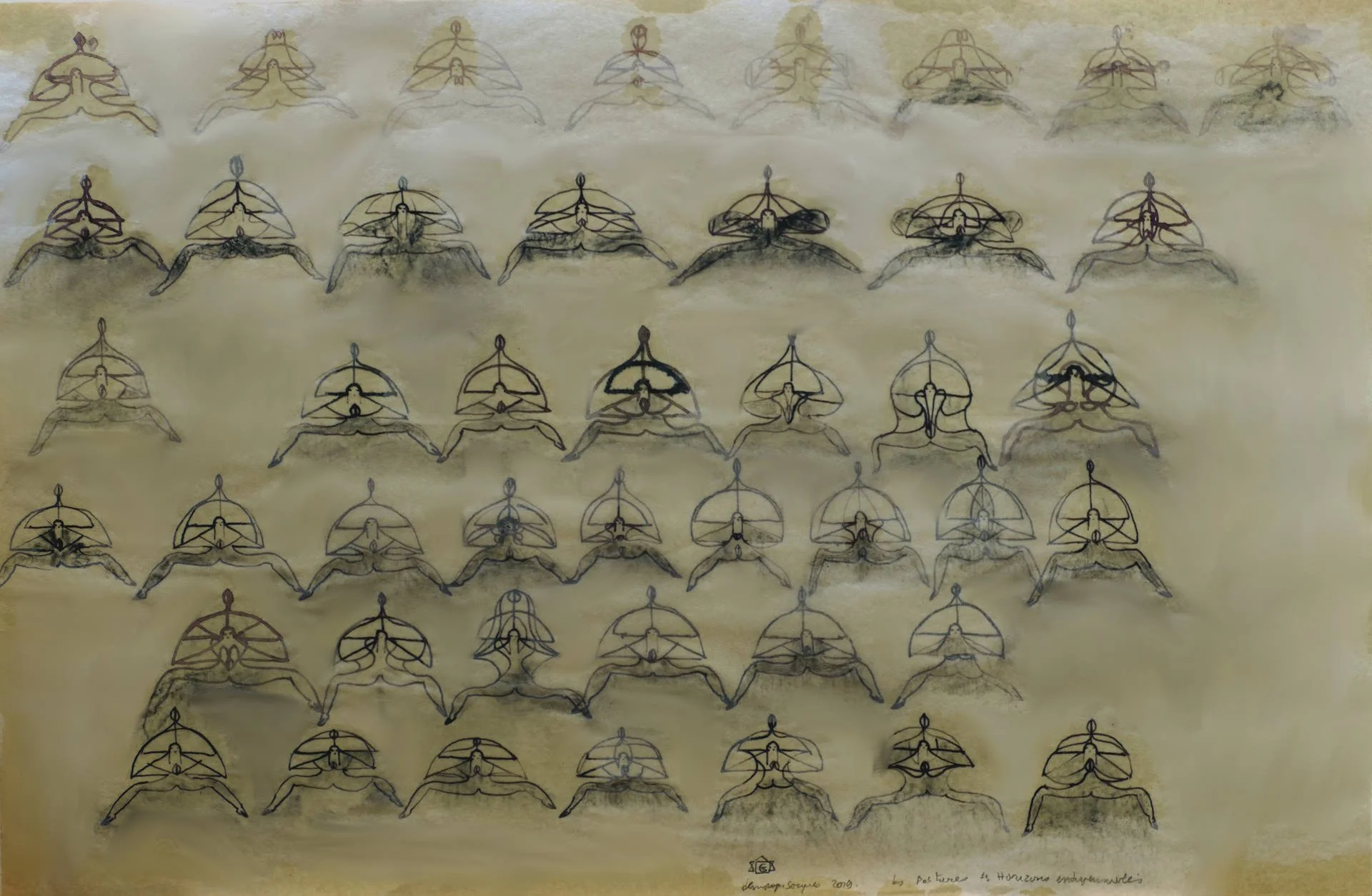Postures d’arkarmada
Réalisé à l’encre de Chine et crayon HB, avec application d’huile de lin pour fluidifier le trait, et de colle, le tout sur du papier de cuisson ancien.
Arkarmada postures
Created using India ink and HB pencil, with linseed oil applied to ease the flow of the line, and glue, all on aged baking paper.
-
Postures d’ARKARMADA est une série née de l’étude approfondie de pratiques corporelles issues de traditions monastiques et martiales — notamment certains Qi Gong comme celui de l’Étoile Polaire ou du Nettoyage de la Moelle, ainsi que du Bagua Zhang.
Ce qui, au départ, devait être de simples croquis pour garder en mémoire les postures étudiées, s’est transformé en une forme d’expression autonome : une calligraphie du geste. Ces dessins ne cherchent pas à représenter fidèlement une posture, car la représentation est souvent une image figée, interprétée par notre esprit, limitée, et vidée de sa vitalité. Au contraire, ces tracés naissent d’une écoute profonde, d’un état de réceptivité induit par la pratique elle-même.
Ils témoignent de la transformation intérieure que ces pratiques provoquent, et de la manière dont elles éveillent en nous une force créative. Il ne s’agit plus de mémoire ou de souvenir, mais de transmission directe. La forme qui surgit alors n’est pas une interprétation, mais une écriture immédiate de l’expérience inscrite dans le corps.
-
Postures of ARKARMADA is a series born from in-depth exploration of bodily practices rooted in monastic and martial traditions — notably certain forms of Qi Gong such as the Northern Star Qi gong and the Washing Marrow, as well as others postures and Bagua Zhang.
What began as simple sketches meant to record the studied postures gradually evolved into an autonomous form of expression: a calligraphy of movement. These drawings do not aim to faithfully represent a posture, as representation is often a frozen image — interpreted by the mind, limited, and drained of vitality. On the contrary, each line emerges from a deep listening, from a state of receptivity cultivated through the practice itself.
They bear witness to the inner transformation these practices generate, and to the way they awaken a creative force within us. It is no longer a matter of memory or recollection, but of direct transmission. The form that arises is not an interpretation, but an immediate inscription of lived experience — written through the body.

























